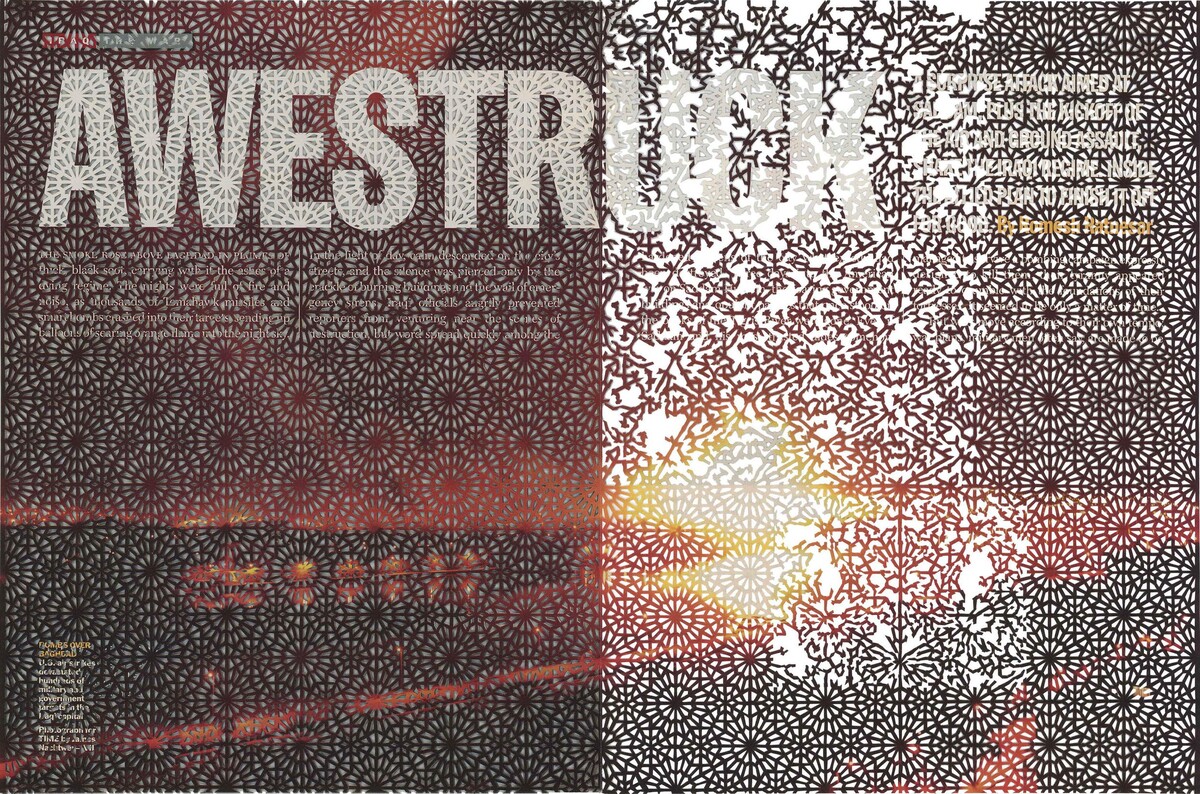
Samira YaminGeometries (Fire IV), 2017; TIME Magazine; 10 ⅜ x 15 ⅜ inches
In encountering the discursive history of “work” in artmaking, all of the objects assembled in WORK variously venerate labor as an essential element. WORK features 10 artists whose laborious methodologies demonstrate an indisputable meticulousness and care for their media. Selected for their quasi-obsessive dedication to their practice, each of the artists in WORK assiduously and repeatedly cut, draw, carve, sculpt, stitch, and weave their materials into complex configurations.
Preparation for each work is crucial, where each artist embarks on their own interesting exploratory processes – sourcing, gathering, layering, obscuring, and revealing – arranging the building blocks for the work to develop – and then slowly watching it manifest. Becca Van K weaves ripcords and climbing paraphernalia into chairs and, with teeny stitches, she embroiders landscapes that reflect the natural world, electronic music, and her nostalgia for the ‘80s and ‘90s. Felice Grodin recontextualizes “macho painting” by creating delicate ink drawings on architectural Mylar based on Jackson Pollock works. Karen Kuo creates porcelain vessels made with a Nerikomi technique where clay is stained, extruded, assembled into a large patterned block, and then sliced to reveal intricate images that explore pattern, color, translucency, and optical illusion. Honoring that the loom was the precursor for today’s computers, Meghann McCrory hand-weaves hundreds of skinny strips of photographic paper to form her colorful abstractions that seem to reference digital pixelation. Nicki Voss cuts, assembles, and stitches together a polychromatic array of textiles that are informed by mapping, geometry and geography. Rebecca Kaufman employs repeated lines and patterns in her optical field paintings on canvas. Renata Daina twists, winds, and manipulates organic materials to make sculptural wall works. Samira Yamin uses an X-Acto blade to incise Time Magazine’s images of war with geometric patterns derived from Islamic architecture. Shiyuan Xu makes lacy porcelain sculptures that reference scientific and microscopic phenomena. Stephanie Robison merges incongruous materials such as needle felted wool and carved marble, fusing organic and geometric forms and synthesizing the handmade and industrial.
With such rigorous accumulations of thought and execution, the exhibit recontextualizes the idea of “women’s work” in our collective past, as a meditation presently, and onward in cultural futures of our epoch. In earlier centuries, women weren’t part of art academia and in many cases were relegated to craft-making and artisanal pursuits such as quilting, weaving, and ceramics. This exhibition acknowledges its antecedents and builds upon this work, honoring the labor of the participating women artists and positing their contribution solidly within today’s contemporary art realm.
Viewers are made participants in the labor, as the act of looking at each of the complex, exigent works in the show invites us to intimately experience their complicated presence. Seeing WORK becomes an exercise in itself.
